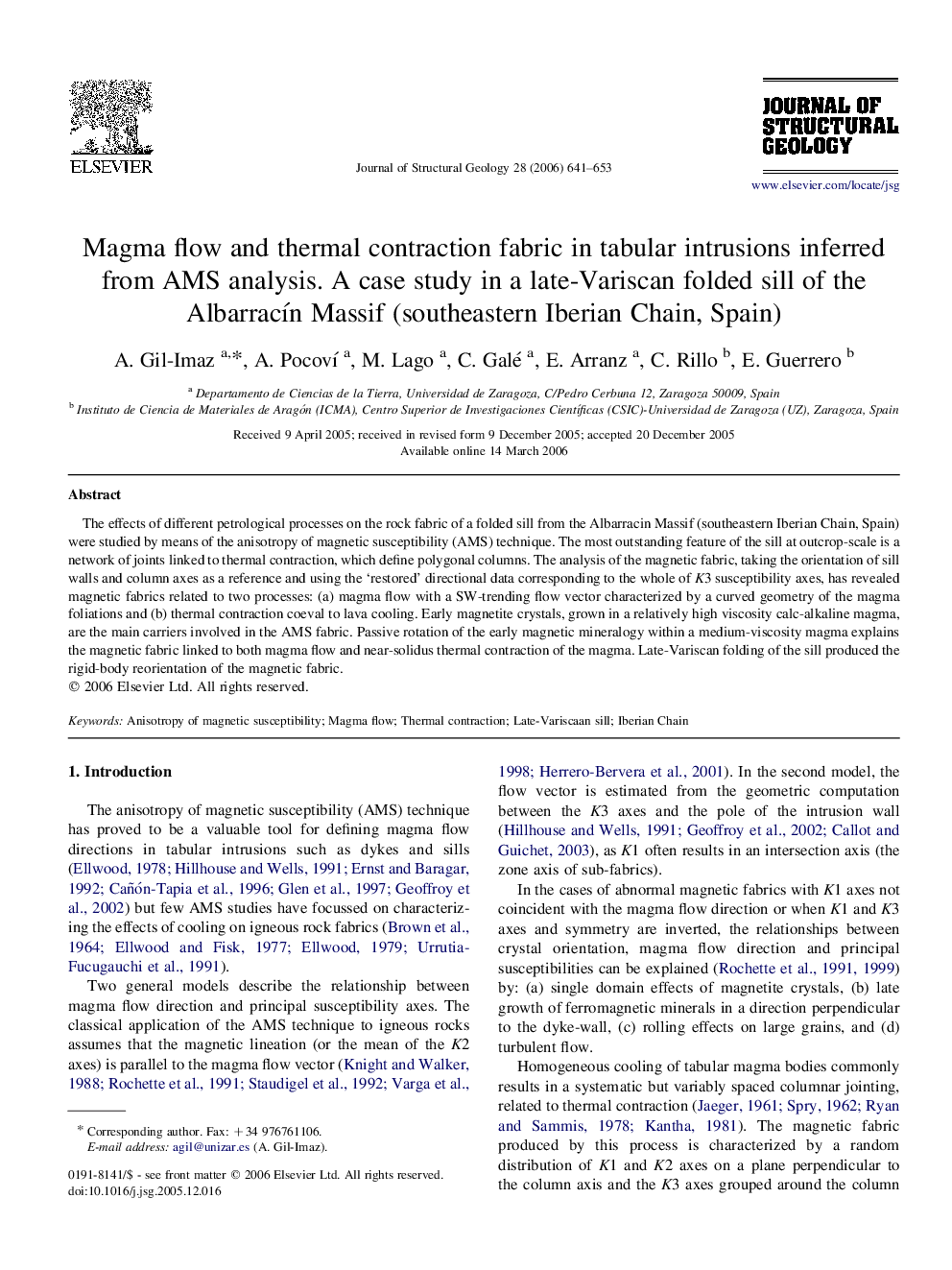| Article ID | Journal | Published Year | Pages | File Type |
|---|---|---|---|---|
| 4734273 | Journal of Structural Geology | 2006 | 13 Pages |
The effects of different petrological processes on the rock fabric of a folded sill from the Albarracin Massif (southeastern Iberian Chain, Spain) were studied by means of the anisotropy of magnetic susceptibility (AMS) technique. The most outstanding feature of the sill at outcrop-scale is a network of joints linked to thermal contraction, which define polygonal columns. The analysis of the magnetic fabric, taking the orientation of sill walls and column axes as a reference and using the ‘restored’ directional data corresponding to the whole of K3 susceptibility axes, has revealed magnetic fabrics related to two processes: (a) magma flow with a SW-trending flow vector characterized by a curved geometry of the magma foliations and (b) thermal contraction coeval to lava cooling. Early magnetite crystals, grown in a relatively high viscosity calc-alkaline magma, are the main carriers involved in the AMS fabric. Passive rotation of the early magnetic mineralogy within a medium-viscosity magma explains the magnetic fabric linked to both magma flow and near-solidus thermal contraction of the magma. Late-Variscan folding of the sill produced the rigid-body reorientation of the magnetic fabric.
